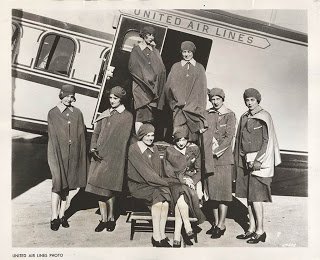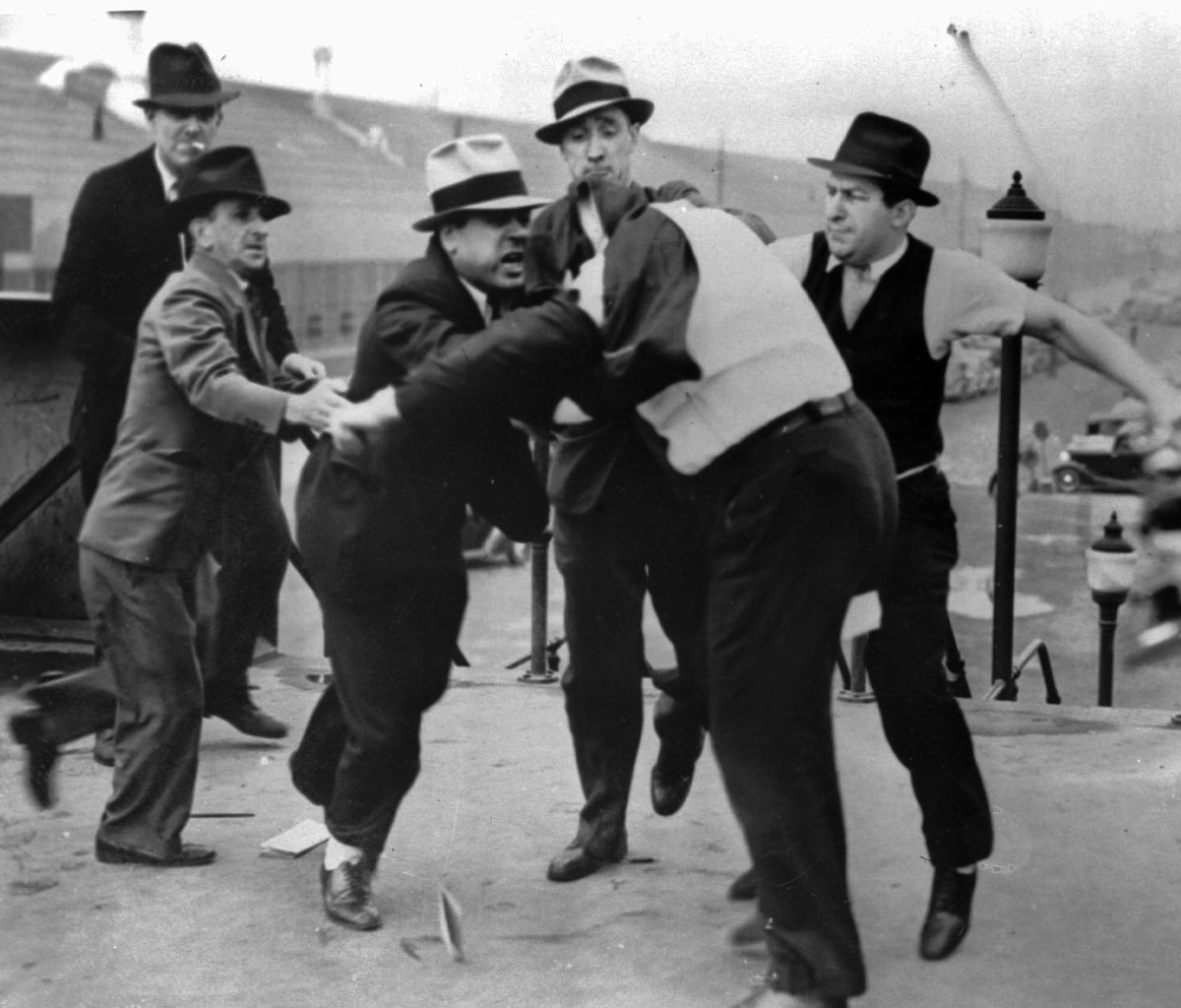This Day in Labor History: August 22, 1945. Five airline stewardesses, as they were then called, formed the Air Line Stewardesses Association. Let's talk about the development of flight attendant unionism! 

The position of flight attendant began on May 15, 1930, when a woman named Ellen Church worked at what was then known as a “skygirl.” Women worked very hard, but had to look glamorous while doing it.
They spent hours on their feet, dealt with drunk passengers, bent and reached and stooped over. A pedometer worn by one stewardess on a 1948 flight from Chicago to Miami showed she walked eight miles during the flight
Rather than train the hostesses, airlines required them to pay for their own training with private services; at least one flight attendant paid $325 to a private school for stewardess training in Kansas City in 1948.
The sexualized nature of this work meant that woman had to uphold physical standards so that the ancestors of fictional Don Draper could enjoy their flight. There were strict requirements around height, weight, and appearance. The woman had to remain single.
Moreover, there was a forced retirement on your 32nd birthday. In other words, airlines used young women to sell sexual allure to male customers, who were then expected to choose conventional lifestyles and marry.
The 1951 film Three Guys Named Mike followed a flight attendant played by Jane Wyman around her adventures of love and travel until she settled down with one of the Mikes, a small-town science professor where she could perform traditional duties of domesticity.
Working conditions could be quite unpleasant. Planes were smaller, slower, and flew at much lower altitudes than today. That meant long turbulent flights with a lot of passengers vomiting from motion sickness.
Flight attendants had to manage this, getting thrown around from turbulence and sometimes crawling through vomit. Pay was very low, about $125 a month in 1944, which is the equivalent to $1630 a month today or slightly less than $20,000 a year.
Moreover, the pay was weighted on 100 hours of air time, but various duties on the ground raised it to a real 150 hours, meaning 50 effective unpaid hours a month.
There were very small numbers of male flight attendants as well, mostly on international flights, but they were losing their hold in the profession by the 1940s and many airlines refused to hire them.
Ada Brown had the idea to start the union. She was United’s chief stewardess and was angry about the airline’s unwillingness to make improvements.
She later remembered, “As chief stewardess I tried to get improvements for the girls with salary, flight restrictions, and protection from unjust firing. We were always promised things, but nothing was ever done—except to throw parties for the stewardesses.”
She found four friends to join her—Edith Lauterbach, Frances Hall, Sally Thometz, and Sally Watt.
Lauterbach joined United in 1944. Like many women, she planned to work for a year, see a bit of the world, and quit. Instead, she became a union activist and fought to stay in the air, even after her age reached 32.
Within a few months, three-quarters of United attendants had signed up and by August 1945, the ALSA had established local councils in 4 cities, had elected officers, and drafted a constitution.
ALSA became the new frontier in pink-collar labor activism, where professional and semi-professional women organized their professions, including telephone operators, waitresses, teachers, and social workers.
The ALSA conceived of itself as elite labor and as such demanded respect. The first issue of the ALSA newspaper Service Aloft in October 1946 notes.....
“The airline industry seems to think they are doing a favor when they give a person a job as a steward or stewardess. They are prone to forget that these people have done more to sell airplane traveling to the American people than any other single factor.”
Thus began a multi-decade movement consisting of thousands of women, often new workers in a field with high turnover and severe rules that restricted long-term employees. It was a long hard struggle for flight attendants to reach the point they are at today.
The union won its first contract in 1946, when United increased pay to $155 and agreed to limited hours, set rest periods between flights, and a grievance procedure.
In 1947, ALSA President Ada Brown married and became a victim of United’s rule against marriage, forcing her to resign from both her work and the union.
The union not only had to deal with these issues, but also significant sexual harassment from pilots, a group with which the union had a complex and not altogether productive or friendly relationship.
A former TWA flight attendant remembered pilots making “unofficial girdle checks” on the attendants. The pilots union started their own subsidiary within the flight attendants and forced the ALSA to merge with it in 1949.
Several breakoff movements took place over the years, with most of the attendants forming what is today Association of Flight Attendants in the late 1970s, although the AFA did not get a charter from the AFL-CIO until 1984.
The age requirements did not go away until 1968, after flight attendants used Title VII of the Civil Rights Act to challenge discrimination. At that point the average career of a flight attendant was only 18 months.
The union pushed the airlines to end the marriage requirement as well, to which courts agreed in 1971, at the same time they opened the profession to men. The weight requirements were loosened in 1979 after more union pressure.
The union pressed to apply OSHA rules to airplane labor, end bans on pregnant attendants, promote cabin safety measures for both passengers and workers, and helped kill a 1981 FAA plan to reduce flight attendants in each flight.
The last surviving member of the 5 flight attendants to start the ALSA, Edith Lauterbach, died in February 2013 at the age of 91. She retired from the airlines in 1986, the first woman to serve more than forty years as a flight attendant.
Today, this great union is the @afa_cwa, merging with the Communication Workers of America after post-9/11 layoffs. I know you all love its president, @FlyingWithSara, so I hope this thread helps you understand what these workers have been through and how they got to this point!
@afa_cwa @FlyingWithSara Back tomorrow to discuss Sacco and Vanzetti.
• • •
Missing some Tweet in this thread? You can try to
force a refresh










